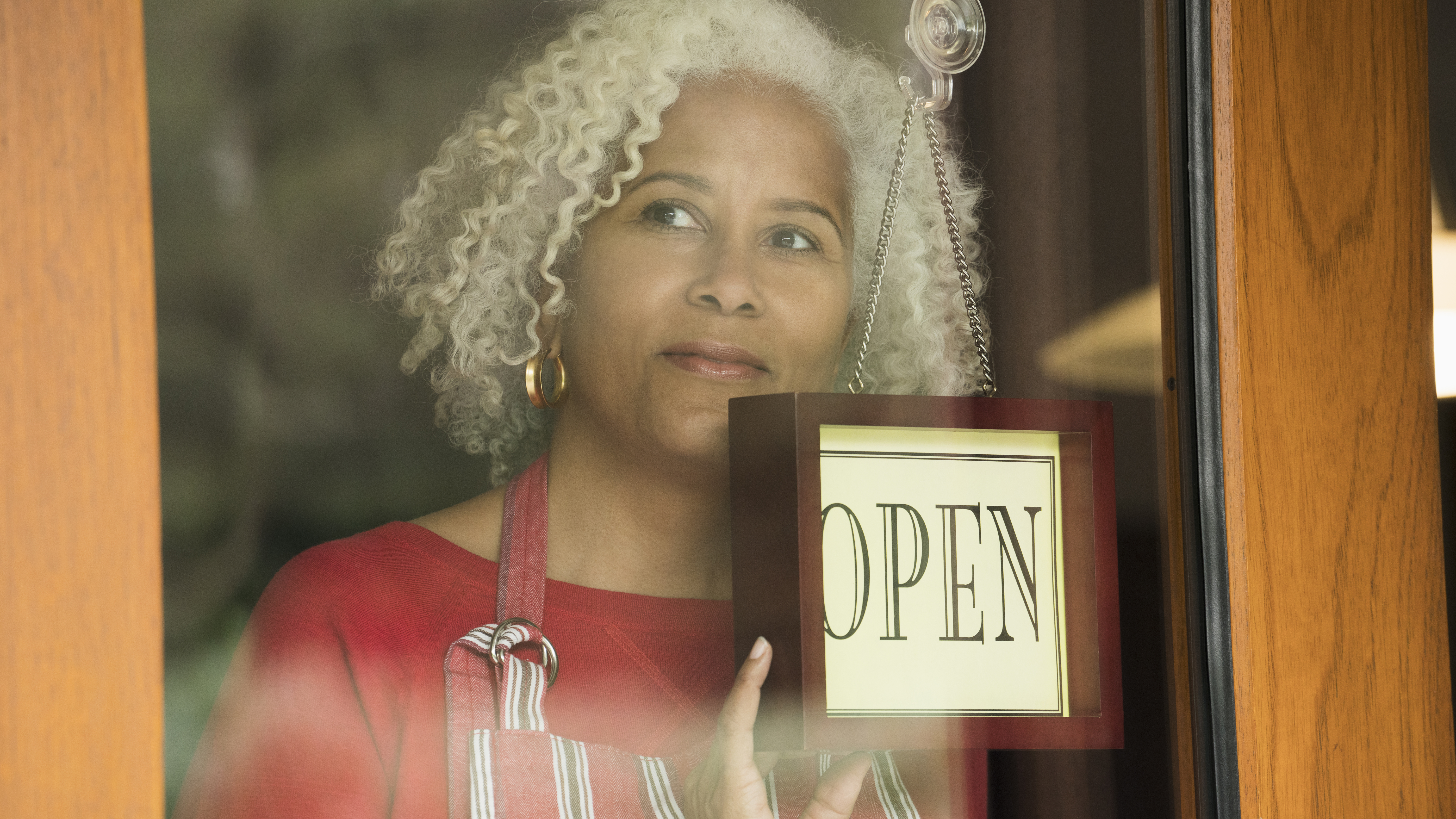AARP Hearing Center
Impossible Choices: Returning to Work in the Era of COVID
By Nancy A. LeaMond, August 4, 2020 11:12 AM

When the coronavirus swept into the United States earlier this year, millions of Americans lost their jobs, were put on unpaid leave, or were sent home to work remotely. Now, with states reopening despite continued spread of the virus, many are facing a difficult dilemma: risk their health by going back to work or risk continued loss of income by staying home. For women over 50, who are more likely to work in sectors like retail, education, healthcare and hospitality that can’t be done remotely, this decision comes with serious consequences.
From a health perspective, we know that while anyone can contract COVID-19, the virus is especially dangerous for older adults. According to the CDC, Americans age 50-64 account for 136 hospitalizations per 100,000 people vs. 85 per 100,000 for folks in their 40s. And, tragically, eight out of ten COVID-19-related deaths have been adults age 65+. Part of this is because older adults are more likely to have other health conditions that put them at greater risk. Fully one-quarter of all women age 50 and up, and close to half of low-income 50+ women, were in poor or fair health pre-COVID.
But, staying home and forgoing a paycheck undermines what was already a precarious financial position. Older women are more likely than their male peers to have taken time out of the workforce to raise children and take care of loved ones, which—in a one-two punch with the persistent gender wage gap—means lower incomes, lost earnings, and reduced Social Security benefits. So, on average, 50+ women don’t have as much saved for retirement as men, and millions have no retirement savings at all.
To make things even more complicated, many older women are also thinking about others whom they may put at risk or who need their financial support. The majority of America’s 48 million family caregivers—those who take care of spouses, aging parents and other adult loved ones—are women, and a significant percentage of them are age 50 and up. One AARP member recently said this about her decision to go back to work: “It was scary . . . As an older woman who works in health care, I made the difficult choice to help provide financially for my family. As a member of the sandwich generation, I not only care for my husband and two children, but also my parents in their nineties. I had to acknowledge the fact that I might not only be risking my life, but also the lives of those that I hold so close to my heart. But ultimately, I made the choice to go back. I felt that I owed it to myself to keep doing the things that I love every day and secure my financial future.”
Unfortunately, women who have lost their jobs or make the tough call to stay home face a very uncertain future when it comes to finding a new job or going back to work post-pandemic. AARP research shows that it takes longer for 50+ women to re-enter the workforce when they are unemployed than for both younger women and men of all ages. On average, these women spend a little more than 31 weeks looking for work compared to 18 weeks for women under 50, 23 weeks for men under 50, and not quite 29 weeks for men 50+.
This double whammy of age and gender discrimination, combined with ongoing fear about health risks, is likely to push older women someplace they didn’t plan to go quite yet . . . into retirement. While the unemployment rate for Americans 55+ has increased—from 3.3% in March to 9.7% in June (10.9% for 55+ women)—the percentage of older Americans either in the workforce or looking for work has declined. If these folks have decided to retire sooner then they anticipated, whatever savings they have will need to stretch even further, and they will likely be much more reliant on Social Security over the long haul.
For millions of 50+ women, the coronavirus pandemic is a perfect storm of bad options that put them even farther behind when it comes to their health and retirement security. And, unfortunately, this won’t blow over any time soon. We can expect to see the negative economic impacts for decades to come.
































































